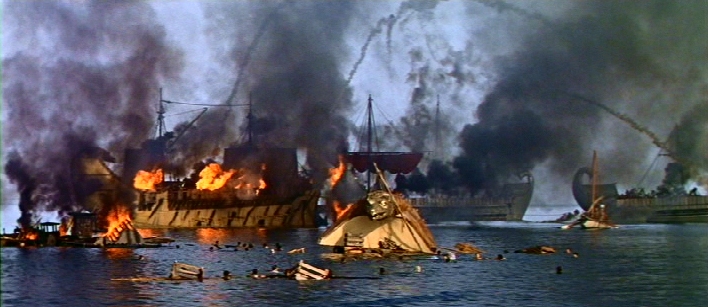The Second Triumvirate
After Caesar’s death Caesars heir Octavian formed a formal alliance with two power-brokers, Mark Anthony and Lepidus in an arrangement known as the second triumvirate. This arrangement was entirely different to the first triumvirate. It’s structure effectively ended the republic as in its subdivision of responsibilities and administration the the participants were made independent of both the senate and its consuls.
Once Octavian had established himself in a position of total control he disposed of both Licinius, by forcing him to retire, and Anthony, by defeating him in battle.
Final victory in Hispania
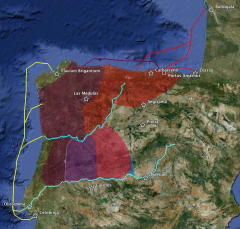 Fig 3 Octavian's capture of Cantabria( North- West Hispania) showing Octavian's personal command (yellow)Octavian then set out to defeat all rebellious elements within the empire and commence a programme of expansion. He deliberately involved himself in the conquest of North Western Hispania taking personal command of a fleet which sailed up the Atlantic coast to avoid the defences which had been set up in the mountain passes. A second fleet sailed from the mouth of the Garronne and leapfrogged defences on the north coast.
Fig 3 Octavian's capture of Cantabria( North- West Hispania) showing Octavian's personal command (yellow)Octavian then set out to defeat all rebellious elements within the empire and commence a programme of expansion. He deliberately involved himself in the conquest of North Western Hispania taking personal command of a fleet which sailed up the Atlantic coast to avoid the defences which had been set up in the mountain passes. A second fleet sailed from the mouth of the Garronne and leapfrogged defences on the north coast.
Pax Romana
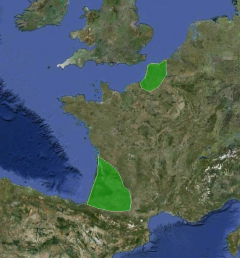 Fig 4 Revolt of the Mordini ( Pas de Calais) And the Aquitani(Bordeaux and Les Landes)He then personally intervened in a series of revolts in gaul of which the most important were the Mordianii on the north cost and the Aquitanii in the Garronne valley. Octavian’s actions were not confined to the military. he also subdivided gaul into three provinces to recognise the natural grouping of tribes and built the temple of the three Gauls in Lugdinium and was present at the ceremonies in honour of Celtic gods during it’s inauguration.
Fig 4 Revolt of the Mordini ( Pas de Calais) And the Aquitani(Bordeaux and Les Landes)He then personally intervened in a series of revolts in gaul of which the most important were the Mordianii on the north cost and the Aquitanii in the Garronne valley. Octavian’s actions were not confined to the military. he also subdivided gaul into three provinces to recognise the natural grouping of tribes and built the temple of the three Gauls in Lugdinium and was present at the ceremonies in honour of Celtic gods during it’s inauguration.
There followed a period known as the Pax Romana. For those who lived away from the frontiers and who complied with the ethos and direction of the state, there were few threats to be faced.
Interestingly there are several references to the fact that it was difficult to convince Roman society that peace was desirable.
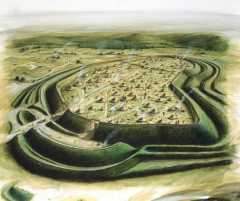 However, the recent discovery (2011) of 50 decapitated bodies near Maiden Castle in Dorset, England serves as a good reminder that the Pax Romana was peace for the Roman people, not necessarily for anyone else. The bodies have been carbon dated to be victims of the Roman invasion of Britain in AD 43. The Roman Emperor at the time was Claudius and his principle commander was Vespasian who in AD 69 became Emporer himself.
However, the recent discovery (2011) of 50 decapitated bodies near Maiden Castle in Dorset, England serves as a good reminder that the Pax Romana was peace for the Roman people, not necessarily for anyone else. The bodies have been carbon dated to be victims of the Roman invasion of Britain in AD 43. The Roman Emperor at the time was Claudius and his principle commander was Vespasian who in AD 69 became Emporer himself.
The Pax Romana did not extend to the Emperors themselves. Vespasian was one of the very few who died of natural causes. The more usual end for an Emperor would be assassination or defeat in battle by political opponents.
Neither did the Pax Romana extend to those who failed to comply with Roman expectations. Executions were brutal (but perhaps not as brutal as the hanging drawing and quartering of the British middle ages, which was first used in 1305 and was finally abandonned in 1780).
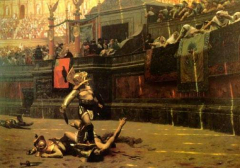 What fascinates us today is the way that rebels, religious non conformists and criminals were given the option of death as a gladiator in the arena. Many accepted this alternative as there was always a chance they would survive. Champion gladiators were allowed to retire in some style.
What fascinates us today is the way that rebels, religious non conformists and criminals were given the option of death as a gladiator in the arena. Many accepted this alternative as there was always a chance they would survive. Champion gladiators were allowed to retire in some style.
The Sucession
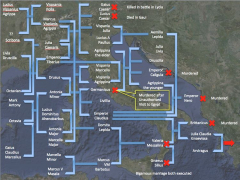 Even if some of the instrumentalities used may be seen as brutal Octavian is generally seen as a sucessful emporer who led Rome into a period of peace and stability. unfortunately the thing he got wrong ,perhaps gave no attention to, was the succession. The lack of a succession plan could surely have been seen as the factor most likely to create instability.
Even if some of the instrumentalities used may be seen as brutal Octavian is generally seen as a sucessful emporer who led Rome into a period of peace and stability. unfortunately the thing he got wrong ,perhaps gave no attention to, was the succession. The lack of a succession plan could surely have been seen as the factor most likely to create instability.
He chose his friend Aggrippa to be his successor but Agrippa died first. his step son Tiberius never wanted to be Emperor and his dislike for the role showed clearly in his attitude.
There were then a succession of unfortunate deaths with the only survivers being Caligula and his uncle Claudius.
The succession ultimately came the Emporer Nero, who has been condemned for many different reasons but propably was deposed because he was attempting to introduce improved financial control.
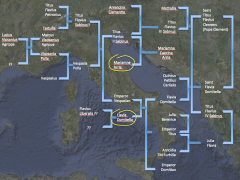 The succession then did fall to Agrippa’s family but only after a civil war.
The succession then did fall to Agrippa’s family but only after a civil war.
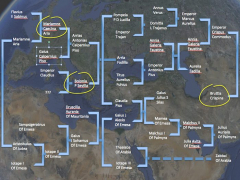
The Boundaries
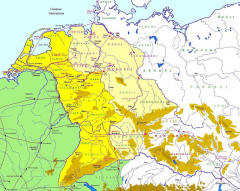 Fig 9 Tiberius on the Danube Around the boundaries of the empire there was little sign of peace. Here there was continual conflict, caused partly by the Roman expansionist policies but also by a desire on the part of those living beyond the frontiers to share in the undoubted wealth of the Roman state.
Fig 9 Tiberius on the Danube Around the boundaries of the empire there was little sign of peace. Here there was continual conflict, caused partly by the Roman expansionist policies but also by a desire on the part of those living beyond the frontiers to share in the undoubted wealth of the Roman state.
Octavian formally converted the republic to an empire though he himself diplomatically chose the title Princeps, “chief citizen” and the “Empire” was known as the Principate.
He established a policy of expansionism and yet it was immediately blunted by the loss of three legions in the battle of the Teutoberg forest which ended Roman expansion into Germany.
Defensive positions were established along and between the Rhine and the Danube, along the southern shores of the black sea and down the Euphates to the Persian Gulf.
There were Roman colonies along the whole southern coast of the mediterranean and the margin between the arable land and the desert was clearly another frontier. At various times the desert nomads penetrated limiting Rome to the coastal strip.
Greatest extent
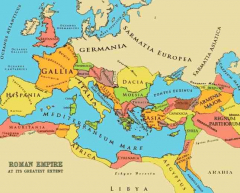 In the time of Trajan in AD 117 the empire reached it’s greatest extent. The major additions to Octavian’s possessions were Armenia and Mesopotania in the east and Dacia and Britain in the north.
In the time of Trajan in AD 117 the empire reached it’s greatest extent. The major additions to Octavian’s possessions were Armenia and Mesopotania in the east and Dacia and Britain in the north.Trajan was the thirteenth princeps regarded as the “best and the most fortunate “ by the Senate.
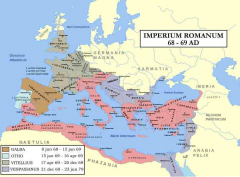 By this stage Rome had already survived a major crisis when there were four Emperors in one year. This crisis showed a clear representation of underlying tensions. It started with a revolt in Gaul by Gaius Julius Vindex, a Roman govenor of Gaulish parentage. Vindex was not a Client king he was a Roman govorner.
By this stage Rome had already survived a major crisis when there were four Emperors in one year. This crisis showed a clear representation of underlying tensions. It started with a revolt in Gaul by Gaius Julius Vindex, a Roman govenor of Gaulish parentage. Vindex was not a Client king he was a Roman govorner.Two govenors from Hispania, Galba and Otho supported or encouraged by Vindex rebellion against Nero. Galba’s claim was supported by the hispanic legions and accepted by the senate but rejected, first by the rhineland legions quickly followed by the legions of Gaul, Britain and Raetia. These legions nominated Vitellus. This was the first demonstration of the continuing instability caused by the determination by the legions to select their own emperor.
Galba was murdered by his associate Ortho, who was also accepted by the senate. Vitellous then marched to depose Ortho and defeated him at the battle of Bedriacum(modern Calvatone) 40,000 perished in the battle and Ortho committed suicide.
The legions in Judea and Syria then proclaimed Vespasion as emperor. The Moesian and Raetian legions changed allegiance to support him.
These legions marched towards Italy, where there was a second battle of Bedriacum again with heavy casualties.
Vitellus was executed.
This pattern was to be repeated many times and the Roman loss of life in these internal squabbles was damaging to the whole empire.
Continuing Invasions
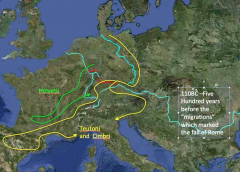 There had been raids by Germanic Tribes into Gaul before Caesar’s conquest. The Cimbri and the Teutoni invaded Italy and Roman positions in southern gaul in 101BC. There were probably other incursions as one objective of the early days of the principate was to occupy the germanic lands and prevent any invasions happening in the future. Rome, under Drusus, won battles BC 11 against the Sicambri and in BC9 against the Marcomanni. In Ad 9 however the Romans suffered a damaging defeat at the Teutoberg Forest.
There had been raids by Germanic Tribes into Gaul before Caesar’s conquest. The Cimbri and the Teutoni invaded Italy and Roman positions in southern gaul in 101BC. There were probably other incursions as one objective of the early days of the principate was to occupy the germanic lands and prevent any invasions happening in the future. Rome, under Drusus, won battles BC 11 against the Sicambri and in BC9 against the Marcomanni. In Ad 9 however the Romans suffered a damaging defeat at the Teutoberg Forest.
In ad 28 the Frisii defeated a roman army in the battle of the Baduhenna wood. The number of incursions gradually increased and the results of the incusions worsened.
There was a great german invasion into Pannonia in AD 170 which reached perhaps besieged Aquileia The Goths invaded Roman Dacia in AD 236. The Alemanni invaded continually from AD 259 to 366 when they settled in Roman Gaul and were never again dislodged.
Thus it can bee seen that there was a continual threat across the frontier in the whole of the time considered to be the Pax Romana. The real story of Rome is that internal instability and conflict inexorably reduced the empires ability to withstand these incursions.
The final “migrations” of 406 to 409 were no different from earlier events except that Roman resistance was virtually non existant.
It must be remembered that although the Western Roman Empire is considered to have “fallen” in 476 the eastern empire, christened by western scholars as the Byzantine empire lasted until 1453, nearly an additional thousand years. Clearly at the time of the fall of the western empire there was much in reserve in the east. however there was little or no interest in saving the west. It was not that the Byzantines did not have the capacity. In the years 533 − 621 an attempt was launched to recover the western empire which was nearly successful.
However examination of the last years of the western empire raises many questions.
